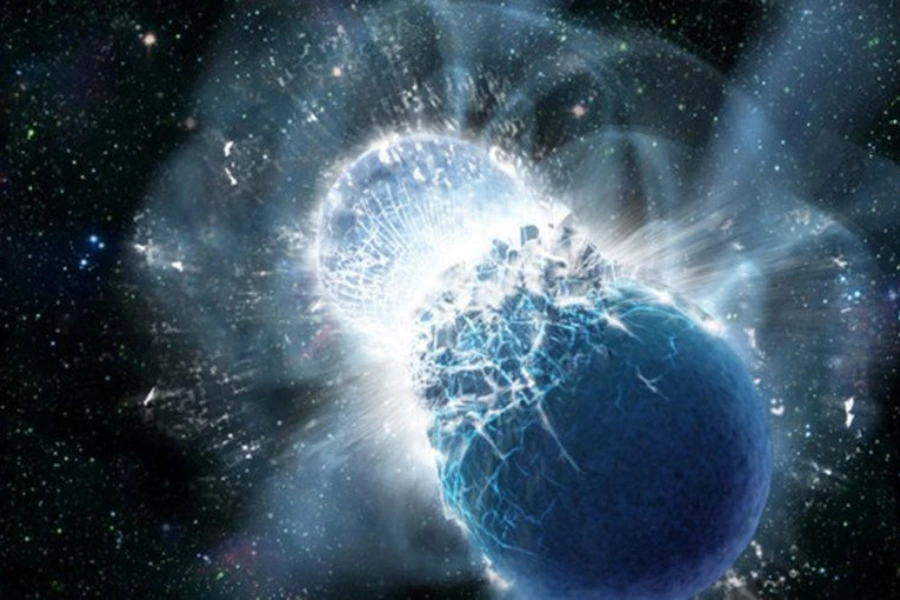
NASA gold discovery: For many years, researchers have not been sure where heavy elements like gold come from in the universe. We know that hydrogen and helium were formed shortly after the Big Bang. Also, stars made iron, but where do elements heavier than iron, like gold and uranium, come from?
New work by Anirudh Patel, a graduate student at Columbia University, suggests that magnetar flares — bursts from strongly magnetized neutron stars. It may be responsible for a good fraction of these heavy elements.
Uncovering Mysteries from the Universe
The research was published in the September issue of The Astrophysical Journal Letters. It makes use of archival data from NASA and ESA telescopes that are almost two decades old. Patel and colleagues estimate that magnetar flares may account for as much as 10% of all the material denser than iron in our galaxy.
“It is a very fundamental question about the origins of complex matter in the universe.” said Patel.
“This is a fun puzzle to try to solve.”
Letting the world know about this work is a part of the growing movement in astrophysics to find new insights in old data. As an example of real example in current news pushed by space and cosmological sciences.
What Are Magnetars?
Magnetars are a type of neutron star – the remnants of huge stars that explode in supernovas. These little objects have incredibly high densities. The material of a magnetar in just a teaspoon would weigh a billion tons here on Earth. What illustrates the uniqueness of magnetars is the strength of their magnetic fields.
These magnetars occasionally perform starquakes, which will send off large bursts of gamma rays. With these bursts, they can create and eject material that is very neutron-rich and trigger rapid neutron capture processes, known as the r-process. It is the process by which heavy elements are formed.
An Increase in Gold Creation
In neutron-rich environments, neutral atoms will readily absorb a slew of neutrons. This in turn leads to an immense amount of nuclear decay and the potential synthesis of even heavier elements like gold or uranium. We understand that neutron star mergers can induce gold synthesis. But those occurrences tend to happen later in the timeline of the universe.
Given that magnetars existed earlier in cosmic time, it is possible that their flares can help us understand how the earliest gold and other heavier elements were formed. It will possibly resolving one of the largest hidden puzzles in astrophysics.
A Finding from Forgotten Data
The turning point was when Eric Burns. He, a co-author and astrophysicist from Louisiana State University, compared previously recorded gamma-ray data from a magnetar flare in 2004 with NASA’s RHESSI and ESA’s INTEGRAL missions. The insane part was that their observations corresponded with the predictions made by Patel’s theoretical model. This doesn’t usually happen in astrophysical research.
Burns said, “It was seen back then, but no one had a clue what it could be.” What was once just a footnote in the scientific literature is now a potential lead to understanding how cosmic gold originated.
Future Perspective: NASA’s COSI Mission
When launched in 2027, NASA’s Compton Spectrometer and Imager (COSI) could help test these discoveries. COSI will be designed to detect gamma-ray events from across the Universe. It should be able to identify specific elements made during these events.
This discovery opens the doors for further research of archival. It is also for upcoming data of observatories in the ground and space.
Final Thoughts
The idea that your wedding ring or smartphone might have atoms that were produced in a magnetar explosion. It is not just a nice poetic thought, but it’s a scientific fact evolving. With more missions like COSI on the way and countless concepts of older datasets still being explored by scientists, we will continue to provide a deeper understanding of the formation and distribution of matter throughout the universe.
In space science, this is definitely a trending news today, as it gives a rare insight into the origins of some of Earth’s most precious and enigmatic materials.







